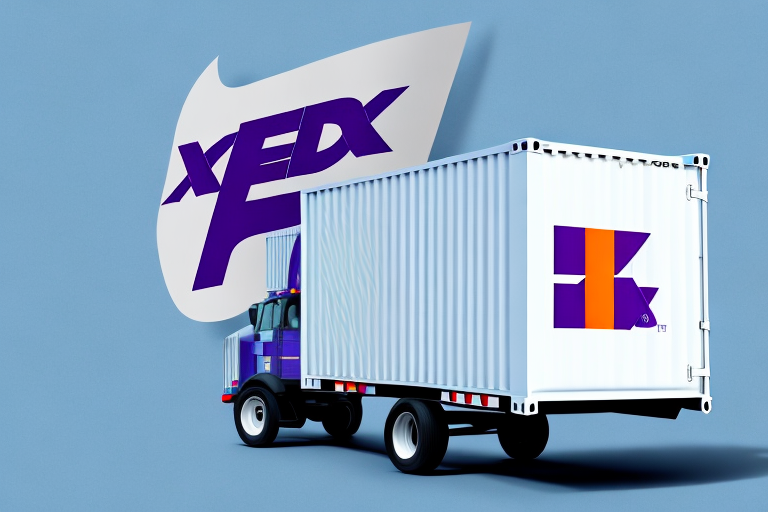Conducting a Parcel Station Audit: Key Insights and Best Practices
Maintaining efficient parcel station operations is essential for compliance, quality control, and overall performance. A comprehensive parcel station audit serves as a vital tool in identifying areas for improvement, ensuring regulatory adherence, and enhancing customer satisfaction. In this article, we delve into the significance of regular parcel station audits, their benefits, unique requirements based on station types, and best practices to execute thorough and accurate audits.
Understanding the Importance of Parcel Station Audits
Parcel station audits play a critical role in ensuring that operations run smoothly and efficiently. According to the ShipScience 2023 Parcel Operations Report, regular audits can reduce operational inefficiencies by up to 20%. These audits help identify bottlenecks in processes, evaluate equipment functionality, and assess facility conditions, thereby preempting potential issues before they escalate.
Moreover, audits ensure compliance with industry regulations and standards, which is crucial for avoiding legal penalties and maintaining reputable service standards. They also offer insights into cost-saving opportunities by highlighting areas where resources can be optimized or waste can be minimized. Additionally, audits contribute to enhancing customer satisfaction by ensuring timely and accurate package handling, reducing wait times, and maintaining high facility standards.
The Benefits of Conducting Regular Parcel Station Audits
Regular parcel station audits offer numerous advantages:
- Compliance Assurance: Ensures adherence to regulatory standards and industry best practices.
- Operational Efficiency: Identifies inefficiencies and areas for process optimization, leading to cost savings.
- Transparency: Provides a clear audit trail documenting compliance and operational performance.
- Trust Building: Enhances trust with customers and partners by demonstrating commitment to quality and compliance.
- Risk Mitigation: Detects potential risks early, allowing for proactive measures to prevent major issues.
According to ShipScience, organizations that conduct regular audits report a 15% increase in operational productivity and a 10% reduction in operational costs.
Types of Parcel Stations and Their Unique Audit Requirements
Parcel stations vary in size, complexity, and the nature of packages they handle, each necessitating tailored audit approaches:
- Small Parcel Stations: Require less frequent audits focused on basic operational efficiency and compliance.
- Large, Complex Facilities: Demand comprehensive audits covering multiple departments, extensive equipment checks, and detailed compliance verification.
- Specialized Stations: Stations handling hazardous materials, perishable goods, or high-value items require additional safety checks, security measures, and specialized compliance assessments.
Location-specific factors also influence audit requirements. For instance, stations in regions with extreme weather conditions may need additional checks for package storage integrity, while those in high-pollution areas might require regular assessments to prevent package contamination. Additionally, the nature of handled packages—such as electronics versus clothing—dictates the focus areas of the audit, whether on security or efficient handling processes respectively.
How to Plan and Prepare for a Successful Parcel Station Audit
Effective planning and preparation are essential for a successful parcel station audit. Follow these steps to ensure readiness:
- Define Audit Scope: Clearly outline the objectives, areas to be audited, and the criteria for evaluation.
- Identify Risks and Hazards: Assess potential risks related to operations, safety, and compliance.
- Assemble Audit Team: Ensure that the audit team comprises knowledgeable and experienced personnel.
- Ensure Accessibility: Confirm that auditors have full access to relevant areas and resources.
- Review Documentation: Update all operational records, standard operating procedures (SOPs), and compliance documents.
- Communicate with Staff: Inform all employees about the upcoming audit, its purpose, and their roles in facilitating it.
Thorough preparation not only streamlines the audit process but also enhances the accuracy and effectiveness of the audit outcomes.
The Key Elements to Include in Your Parcel Station Audit Checklist
A comprehensive audit checklist ensures that all critical aspects of parcel station operations are evaluated. Key elements to consider include:
- Equipment and Machinery: Inspect functionality, maintenance records, and safety features of all equipment.
- Safety and Security: Assess adherence to safety protocols, security measures, and emergency preparedness.
- Personnel Training: Verify that staff are adequately trained, certified, and compliant with operational standards.
- Regulatory Compliance: Ensure all operations meet local, national, and industry-specific regulations.
- Operational Efficiency: Evaluate processing times, accuracy of package handling, and effectiveness of tracking systems.
- Environmental Impact: Review energy usage, waste management practices, and sustainability initiatives.
Including these elements in your audit checklist facilitates a thorough evaluation, helping to identify strengths and pinpoint areas needing improvement.
Best Practices for Conducting a Thorough and Accurate Parcel Station Audit
Adhering to best practices enhances the thoroughness and accuracy of your audits:
- Optimal Timing: Conduct audits during peak operational periods to gain a realistic view of daily operations.
- Comprehensive Checking: Incorporate both routine and ad-hoc checks to cover all operational facets.
- Leverage Technology: Utilize digital audit tools, automated data collection systems, and monitoring technologies to augment manual processes.
- Team Collaboration: Involve multiple team members to ensure diverse perspectives and comprehensive coverage.
- Documentation: Meticulously record findings, recommendations, and corrective actions.
- Follow-Up: Implement and monitor corrective actions to ensure continuous improvement.
These practices contribute to audits that not only identify current issues but also foster a culture of ongoing improvement.
Common Challenges Encountered During a Parcel Station Audit and How to Overcome Them
Auditing parcel stations can present several challenges, including:
- Outdated or Incomplete Documentation: Maintain up-to-date records and ensure all necessary documentation is available prior to the audit.
- Poor Communication: Foster clear and open communication channels among audit team members and station staff.
- Operational Disruptions: Plan audits to minimize disruption by scheduling them during less critical periods if possible.
- Resistance from Staff: Address concerns by clearly communicating the benefits of the audit and involving staff in the process.
To mitigate these challenges, assemble a well-trained audit team, establish clear communication protocols, and develop contingency plans. Encouraging a collaborative audit environment helps in overcoming resistance and ensuring a successful audit process.
Integrating Technology into Your Parcel Station Audit Process
Incorporating technology into the audit process can significantly enhance efficiency and accuracy. Technologies to consider include:
- Digital Checklists: Use software solutions to create dynamic checklists that can be easily updated and shared.
- Automated Data Collection: Implement systems for automatic data gathering, reducing manual input errors.
- Remote Monitoring Systems: Utilize IoT devices and sensors to monitor operations in real-time.
- Barcode Scanners: Deploy barcode scanners to accurately track package movement and identify delays proactively.
According to ShipScience, integrating these technologies can improve audit efficiency by up to 30%, while also providing deeper insights into operational performance.
For example, barcode scanners can quickly and accurately scan package labels, reducing the need for manual data entry and minimizing the risk of errors. Additionally, barcode scanners can be used to track package movement and identify any potential issues or delays in the delivery process. By incorporating barcode scanners into your audit process, you can improve the speed and accuracy of your audits, while also gaining valuable insights into your parcel station operations.
Analyzing Data Collected During Your Parcel Station Audit: What to Do Next
Post-audit, analyzing the collected data is crucial for informed decision-making:
- Identify Patterns and Trends: Analyze data to spot recurring issues, peak usage periods, and underutilized resources.
- Implement Corrective Actions: Address identified issues through targeted interventions such as process modifications or equipment upgrades.
- Develop Improvement Strategies: Formulate strategies based on audit findings to enhance operational efficiency and customer satisfaction.
- Ensure Regulatory Compliance: Review audit data to confirm ongoing compliance with relevant regulations.
Utilizing data-driven insights from audits fosters continuous improvement and ensures that operational adjustments are based on solid evidence.
Maintaining Compliance and Quality Control in Your Parcel Station Operations
Continuous compliance and quality control require dedicated efforts:
- Regular Audits: Schedule audits periodically to maintain consistent oversight of operations.
- Continuous Improvement: Implement iterative improvements based on audit findings and feedback.
- Employee Training: Invest in ongoing staff training to uphold operational standards and compliance.
By prioritizing these areas, your parcel station can sustain high standards of quality and compliance, ensuring long-term operational success.
Evaluating the Results of Your Parcel Station Audit: Making Informed Decisions for Improvement
The outcomes of your audit should guide strategic decisions:
- Process Optimization: Refine operational processes based on identified inefficiencies.
- Equipment Upgrades: Invest in new or improved equipment to enhance operational capabilities.
- Staff Development: Provide training and development opportunities to address skill gaps and improve performance.
A data-driven, proactive approach ensures that decisions made post-audit lead to meaningful and sustainable improvements.
Incorporating Feedback from Customers and Staff into Your Parcel Station Audit Strategy
Integrating feedback from both customers and staff enriches the audit process:
- Customer Surveys: Collect feedback on service quality, user experience, and areas for improvement.
- Staff Input: Engage employees in providing insights on operational challenges and potential enhancements.
By valuing and incorporating this feedback, you can address specific concerns and enhance the overall effectiveness of your operations.
Continuously Improving Your Parcel Station Operations Through Regular Auditing and Analysis
In conclusion, conducting regular parcel station audits is critical for maintaining compliance, ensuring quality control, and improving overall efficiency. By following best practices, tailoring your audit process to your specific needs, integrating advanced technologies, and incorporating feedback from stakeholders, you can continuously enhance your parcel station operations. This proactive approach not only optimizes performance but also positions your organization for long-term success in a competitive market.









